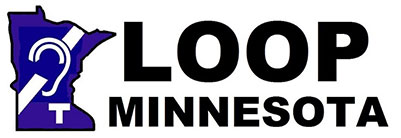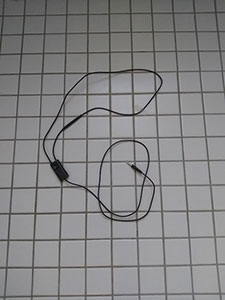For hearing loop sound to be clear and consistent, loop-connected microphones (mikes) must be used correctly.
The microphone style, type and installation vary with the venue. But no matter what these choices are, sound signals that do not go through loop mikes are not fed into the hearing loop. They are not picked up by telecoils and cannot be heard by those listening through the loop.
· A church member wondered what was wrong with the church hearing loop. He heard and understood the sermon and readings perfectly, but he could not hear anything when the pastor made announcements away from the altar and pulpit.
Obviously, the loop worked. However, in some way the pastor was not “miked” when he addressed the congregation away from the fixed loop microphones attached to the altar and pulpit. That’s when a loop-connected handheld mike should have been used. Then again, maybe the pastor had a body/belt worn microphone pack, such as a lapel mike, that was not turned on. Or maybe he forgot to wear it?
· Recently, my husband and I attended the launch of a new hearing loop in a Town Council Chamber. The microphone used for public comments was a handheld mike that was used incorrectly in many ways. People held it low at chest level, turned their heads away from it and waved the mike around…
Listening through the loop became almost impossible as the burping, halting sound faded in and out. In this case, a fixed mike such as a “gooseneck” mike is preferrable as it forces people to speak directly into it. The problem has since been resolved.
Tips for improved loop microphone use
· Make sure that loop-connected microphones of any style are turned on and ready for use.
· Speak at a normal voice level directly into the microphone.
· Do not walk away from fixed loop mikes – or use a loop-connected portable mike
· During “looped” question-and-answer sessions, handheld microphones are passed around so that all can hear the question and the answer. The person who has the mike speaks – one at a time.
· Hold handheld mikes still and close to the mouth, usually at chin-level. This leaves the lips of the speaker visible.
· When you turn, the microphone must turn with you in order to maintain that close-to-the-mouth position.
· Waving a handheld mike around or turning the head away from it leads to uneven, broken-up sound signals that frustrate loop users.
· Ultimately, maintain the handheld or body-worn mikes: Turn them off and wipe them clean after use. Store them correctly. Put them on the charger or replace the batteries as needed.
In the end, correct microphone use is essential for consistent hearing loop sound. It promotes clear and effortless listening, which in turn makes for satisfied hearing loop users. It is a matter of communcation access and quality of life.
*****
If you want to learn more about various topics concerning hearing and hearing loss, please see my blog at https://hearing-loss-talk.com/



